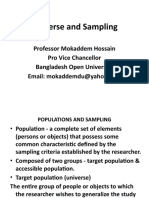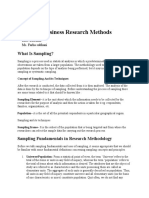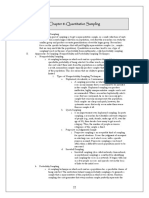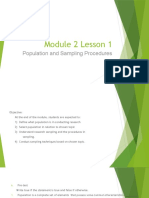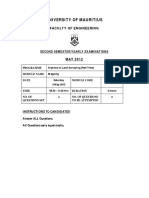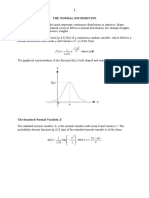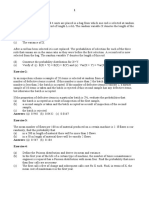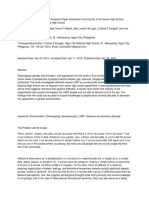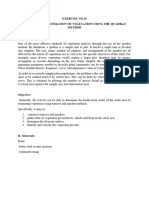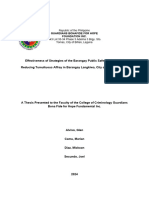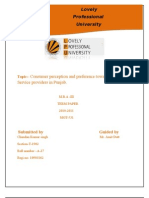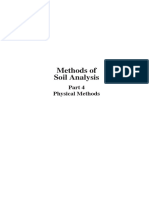0% found this document useful (0 votes)
18 views23 pagesSampling Methods
This chapter discusses the importance of defining research populations and sampling methods in data gathering for research projects. It covers various sampling techniques, including probability and non-probability sampling, and emphasizes the need for clear inclusion and exclusion criteria. Additionally, it addresses the concept of representation and the determination of sample size using the Slovin formula.
Uploaded by
Akshay BundhooCopyright
© © All Rights Reserved
We take content rights seriously. If you suspect this is your content, claim it here.
Available Formats
Download as PDF, TXT or read online on Scribd
0% found this document useful (0 votes)
18 views23 pagesSampling Methods
This chapter discusses the importance of defining research populations and sampling methods in data gathering for research projects. It covers various sampling techniques, including probability and non-probability sampling, and emphasizes the need for clear inclusion and exclusion criteria. Additionally, it addresses the concept of representation and the determination of sample size using the Slovin formula.
Uploaded by
Akshay BundhooCopyright
© © All Rights Reserved
We take content rights seriously. If you suspect this is your content, claim it here.
Available Formats
Download as PDF, TXT or read online on Scribd
/ 23













